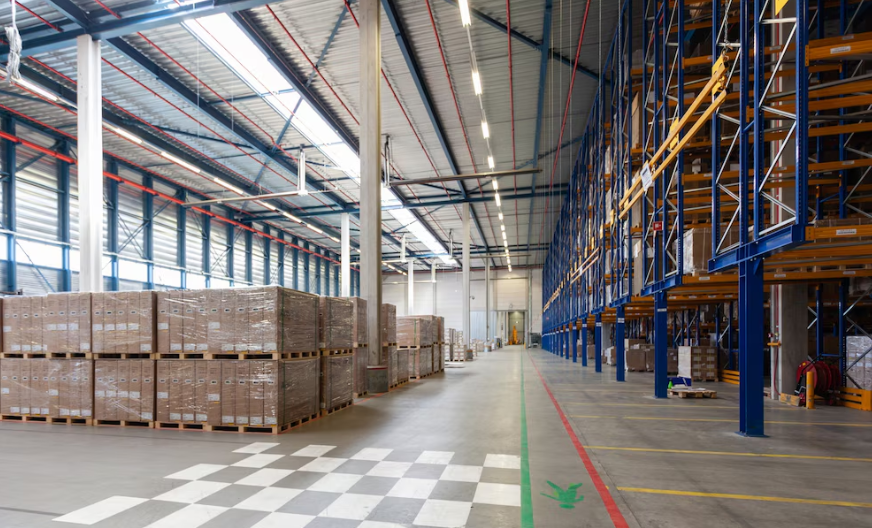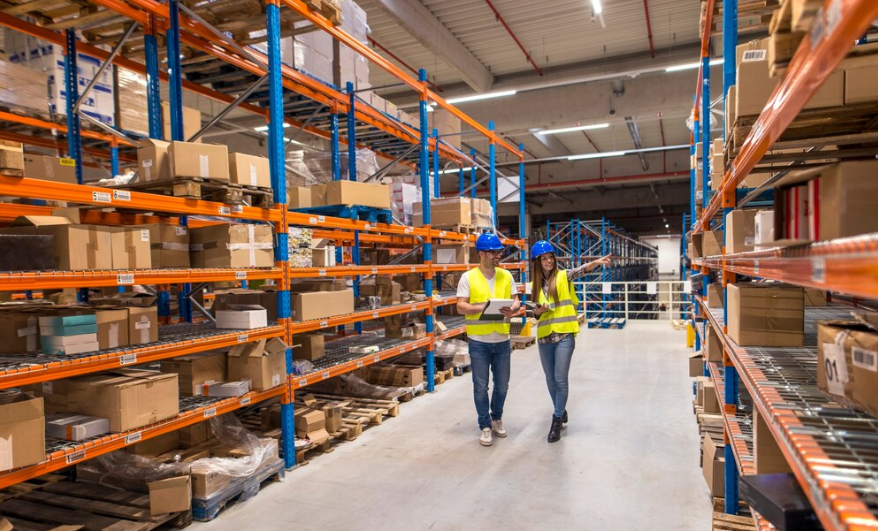Table of Contents
What Is Freight Consolidation? Benefits, Process, and How It Works
Time: May 21,2025 Author: SFC Source: www.sendfromchina.com
In today's fast-paced global economy, businesses face increasing pressure to deliver products swiftly, efficiently, and cost-effectively. Whether you're a small e-commerce startup or a multinational corporation, optimizing your supply chain is crucial to staying competitive. One strategy that has gained prominence in the logistics sector is freight consolidation—a method that not only streamlines shipping processes but also offers significant cost savings.In this comprehensive guide, we'll delve into the intricacies of freight consolidation, exploring its advantages, the processes involved, and how it compares to other shipping methods like Less-Than-Container-Load (LCL) and Full-Container-Load (FCL). We'll also examine the role of third-party logistics providers in facilitating consolidation and address common questions to help you determine if this strategy aligns with your business needs.

1. What Is Freight Consolidation?
Freight consolidation, also known as cargo consolidation or shipment consolidation, is a logistics strategy that involves combining multiple smaller shipments into a single, larger shipment. It is designed to optimize transportation efficiency, reduce shipping costs, and minimize environmental impact.In practice, freight consolidation can take several forms:
- Multi-Shipper Consolidation: Shipments from different shippers are combined into one load destined for the same location or region.
- Single-Shipper Consolidation: A single shipper combines multiple smaller shipments into a full truckload or container to maximize space utilization.
The consolidated shipments are typically collected at a central facility, such as a warehouse or distribution center, where they are sorted and grouped based on their destination. Once consolidated, the shipment is transported to its destination, where it may be deconsolidated for final delivery.
Freight consolidation is particularly beneficial for businesses that frequently ship small volumes of goods, as it allows them to take advantage of economies of scale, leading to lower per-unit shipping costs. Additionally, freight consolidation can result in fewer trucks on the road, contributing to reduced fuel consumption and lower greenhouse gas emissions.
2. Advantages of Freight Consolidation
Freight consolidation offers a multitude of benefits that can significantly enhance a company's logistics operations. By combining multiple smaller shipments into a single, larger load, businesses can optimize transportation efficiency, reduce costs, and improve overall supply chain performance. Below are the key advantages of implementing freight consolidation:
Cost Savings
One of the most compelling reasons to adopt freight consolidation is the potential for substantial cost reductions. By merging smaller shipments into a full truckload, companies can take advantage of bulk shipping rates, thereby lowering the per-unit cost of transportation. This approach minimizes the need for multiple less-than-truckload (LTL) shipments, which are typically more expensive on a per-unit basis. Additionally, consolidating shipments can lead to savings on fuel, labor, and administrative expenses associated with managing numerous individual shipments.Enhanced Transit Times
Consolidated shipments often benefit from more direct routes and fewer stops, resulting in faster delivery times. By reducing the number of handling points and transfers, freight consolidation minimizes delays and accelerates the movement of goods through the supply chain. This efficiency is particularly advantageous for businesses that require timely deliveries to meet customer demands or maintain just-in-time inventory systems.Improved Shipment Security
With fewer touchpoints and transfers, consolidated shipments are less susceptible to damage, loss, or theft. The reduced handling decreases the likelihood of accidents or mishandling, ensuring that products arrive at their destination in optimal condition. This increased security not only protects the physical goods but also enhances customer satisfaction and trust in the company's delivery reliability.Environmental Sustainability
Freight consolidation contributes to a more sustainable supply chain by decreasing the number of vehicles required for transportation. Fewer trucks on the road lead to reduced fuel consumption and lower greenhouse gas emissions. This environmentally friendly approach aligns with corporate social responsibility goals and can improve a company's public image as a steward of sustainable practices.Streamlined Inventory Management
By consolidating shipments, businesses can achieve more predictable and consistent delivery schedules. This predictability facilitates better inventory planning and inventory management, reducing the need for excess safety stock and minimizing storage costs. Efficient inventory management ensures that products are available when needed, enhancing the company's ability to meet customer demands promptly.Simplified Administrative Processes
Managing a single consolidated shipment is administratively simpler than handling multiple individual shipments. Consolidation reduces the paperwork, tracking, and coordination efforts required, freeing up valuable time and resources. This simplification allows logistics personnel to focus on strategic tasks rather than being bogged down by the complexities of managing numerous shipments.Strengthened Carrier Relationships
Regularly utilizing freight consolidation can lead to stronger partnerships with carriers. Consistent, larger shipments are more attractive to carriers, potentially resulting in better service levels, priority scheduling, and more favorable rates. These strengthened relationships can provide long-term benefits, including increased reliability and flexibility in transportation arrangements.3. Freight Consolidation Process
Freight consolidation is a strategic logistics approach that combines multiple smaller shipments into a single, larger shipment. This method optimizes transportation efficiency, reduces costs, and minimizes environmental impact. The consolidation process involves several key stages, each requiring careful planning and execution to ensure seamless operations.
Step 1: Collection of Shipments
The process begins with the collection of individual shipments from various shippers or multiple locations of a single shipper. These shipments are transported to a central consolidation center or warehouse. Efficient coordination is essential at this stage to ensure timely pickup and delivery to the consolidation facility.Step 2: Receipt and Verification
Upon arrival at the consolidation center, each shipment undergoes a thorough inspection to verify its condition, quantity, and accompanying documentation. This step ensures that all goods are accounted for and meet the necessary quality standards before proceeding to the next phase.Step 3: Sorting and Grouping
Shipments are then sorted based on various factors such as destination, delivery timelines, and handling requirements. Grouping shipments with similar characteristics allows for efficient loading and transportation planning. This step is crucial for optimizing space utilization and ensuring that consolidated shipments align with delivery schedules.Step 4: Packaging and Labeling
Proper packaging and labeling are vital to protect goods during transit and facilitate accurate tracking. Shipments are securely packaged to prevent damage, and labels are affixed to provide essential information such as destination addresses, handling instructions, and tracking numbers.Step 5: Consolidation and Loading
Once sorted and packaged, the shipments are consolidated into a single load, typically filling an entire truckload (FTL) or container. Careful loading practices are employed to maximize space utilization and maintain the integrity of the goods. This consolidated load is then prepared for transportation to its destination.Step 6: Transportation
The consolidated shipment is transported to a deconsolidation center or directly to the final destination, depending on the logistics plan. Transportation modes may include road, rail, sea, or air, chosen based on factors such as cost, speed, and destination requirements.Step 7: Deconsolidation and Final Delivery
Upon reaching the deconsolidation center, the consolidated shipment is unpacked, and individual shipments are separated. Each shipment is then dispatched to its respective final destination, completing the delivery process. Efficient deconsolidation ensures timely and accurate deliveries to end customers.4. Differences Between Less-Than-Container-Load and Full-Container-Load
In international shipping, understanding the distinctions between Less-Than-Container-Load (LCL) and Full-Container-Load (FCL) is crucial for optimizing logistics strategies. Each method offers unique advantages and considerations, depending on shipment size, cost, transit time, and handling requirements.
Container Usage
- LCL (Less-Than-Container-Load): In LCL shipping, multiple shippers share space within a single container. This approach is ideal for smaller shipments that do not require the full capacity of a container.- FCL (Full-Container-Load): FCL involves a single shipper utilizing the entire container exclusively. This method is suitable for larger shipments that can fill or nearly fill a container.
Cost Structure
- LCL: Costs are calculated based on the volume (cubic meters) or weight of the cargo, whichever is greater. While LCL can be cost-effective for smaller shipments, per-unit costs may be higher due to additional handling and consolidation fees.- FCL: Costs are typically a flat rate for the entire container, regardless of whether it's fully utilized. FCL becomes more economical as shipment volume increases, reducing the per-unit cost.
Transit Time
- LCL: Transit times are generally longer for LCL shipments due to the need for consolidation at the origin and deconsolidation at the destination. Additional handling can introduce delays.- FCL: FCL shipments often have shorter transit times since the container is sealed and transported directly from origin to destination without intermediate handling.
Handling and Risk
- LCL: Increased handling during consolidation and deconsolidation raises the risk of damage or loss. Cargo is also exposed to potential contamination from other shipments within the same container.- FCL: With exclusive use of the container, FCL shipments experience minimal handling, reducing the risk of damage, loss, or contamination.
Flexibility and Control
- LCL: Offers flexibility for shippers with smaller, frequent shipments. However, there is less control over the shipping schedule and container contents.- FCL: Provides greater control over the shipping process, including scheduling and cargo security, making it ideal for time-sensitive or high-value shipments.
Ideal Use Cases
- LCL: Best suited for small to medium-sized shipments, businesses with limited storage space, or those testing new markets.- FCL: Ideal for large-volume shipments, high-value or fragile goods, and when faster transit times are essential.
5. How Third-Party Logistics Help Freight Consolidation
In the complex landscape of modern supply chains, third-party logistics (3PL) providers play a pivotal role in streamlining operations, particularly through freight consolidation. By leveraging their expertise, infrastructure, and technology, 3PLs enable businesses to optimize shipping processes, reduce costs, and enhance service quality.Expertise and Strategic Planning
3PL providers bring extensive knowledge of logistics and supply chain management, allowing them to design and implement effective consolidation strategies tailored to specific business needs. Their experience in coordinating multiple shipments, understanding regulatory requirements, and navigating transportation networks ensures efficient and compliant operations. According to Fulfyld, consolidation in 3PL not only cuts costs but also streamlines operations, making it an essential strategy for businesses aiming to optimize their logistics.Advanced Technology Integration
Utilizing sophisticated transportation management systems (TMS) and warehouse management systems (WMS), 3PLs provide real-time visibility into shipment status, inventory levels, and delivery timelines. These technologies facilitate better decision-making, route optimization, and proactive issue resolution, contributing to more reliable and efficient freight consolidation processes.Extensive Carrier Networks
3PLs maintain robust relationships with a wide array of carriers across various modes of transportation, including road, rail, air, and sea. This extensive network allows them to negotiate favorable rates, ensure capacity availability, and select the most appropriate carriers for consolidated shipments. As highlighted by FST Logistics, building strong relationships with logistics partners is crucial for successful freight consolidation.Scalability and Flexibility
Businesses often face fluctuations in demand, seasonal peaks, or unexpected disruptions. 3PL providers offer scalable solutions that can adapt to changing needs, allowing companies to adjust their logistics operations without significant capital investment. This flexibility is particularly beneficial for small to medium-sized enterprises seeking to expand their market reach without overextending resources.Enhanced Customer Satisfaction
By improving delivery times, reducing shipping errors, and providing accurate tracking information, 3PLs contribute to a better customer experience. Efficient freight consolidation leads to more predictable and timely deliveries, which is essential for maintaining customer trust and loyalty.6. Conclusion
Freight consolidation is a strategic approach that offers numerous benefits, including cost savings, improved efficiency, enhanced security, environmental advantages, and better inventory management. By understanding the process and collaborating with experienced 3PL providers, businesses can optimize their logistics operations and gain a competitive edge in the market.7. FAQs
Q1: What is freight consolidation?
A: Freight consolidation involves combining multiple smaller shipments into a single, larger shipment to optimize transportation efficiency and reduce costs.Q2: How does freight consolidation save money?
A: By sharing transportation resources, businesses can lower per-unit shipping costs and reduce expenses associated with multiple individual shipments.Q3: What types of businesses benefit from freight consolidation?
A: Businesses that frequently ship small volumes of goods, such as e-commerce retailers and small manufacturers, can significantly benefit from freight consolidation.Q4: How do I choose between LCL and FCL shipping?
A: If your shipment doesn't fill an entire container, LCL is cost-effective. For larger shipments that can fill a container, FCL offers faster transit and reduced handling.Q5: What role do 3PL providers play in freight consolidation?
A: 3PL providers offer the expertise, infrastructure, and technology necessary to efficiently manage the freight consolidation process, from collection to final delivery. Post Views:1189
Post Views:1189
Copyright statement: The copyright of this article belongs to the original author. Please indicate the source for reprinting.
Previous Post
Third-Party Fulfillment Services Explained: What They Are and Why Your Business Needs One
Next Post
What Is Economy Shipping? Everything You Need to Know Before Choosing It
TAGS
Hot Research
Get a Custom China Fulfillment Solution with FREE Storage for 30 Days
 Want to know about our services, fees or receive a custom quote?
Want to know about our services, fees or receive a custom quote?
 Please fill out the form on the right and we will get back to you within a business day.
Please fill out the form on the right and we will get back to you within a business day.
 The more information you provide, the better our initial response
will be.
The more information you provide, the better our initial response
will be.





 TAGS:
TAGS: